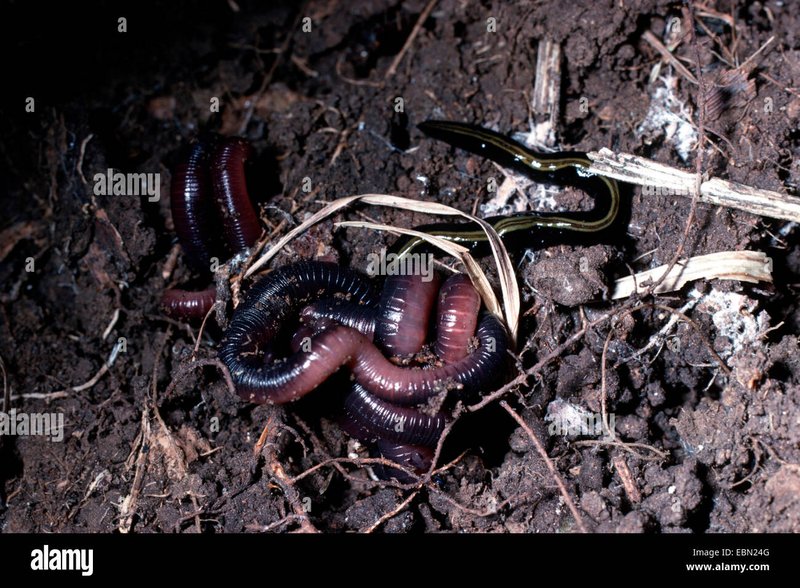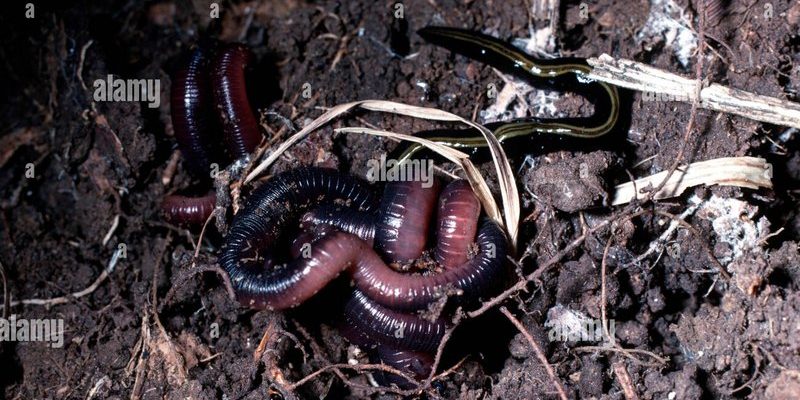
As seasons change, the Giant Gippsland Earthworm’s behavior shifts in response to temperature, moisture, and food availability. Think of them as nature’s garden caretakers, working tirelessly to aerate the soil and decompose organic matter, helping plants grow in vibrant ways. In this article, we’ll dive into these behavior patterns observed in field studies, helping you understand why studying these earthworms is like peeling back the layers of a natural mystery.
Understanding the Giant Gippsland Earthworm
Before we get into the nitty-gritty of their seasonal behaviors, let’s take a moment to appreciate what makes the Giant Gippsland Earthworm special. These creatures are known for their impressive size, with some individuals measuring over 3 meters in length! Their bodies are soft and segmented, allowing them to burrow through the soil with ease.
The earthworm’s habitat primarily consists of the rich, moist soils of the Gippsland region, where they play a crucial role in the ecosystem. They help maintain soil health by breaking down organic matter and enhancing soil structure. But here’s the thing: their survival depends heavily on environmental conditions, especially moisture levels. If it gets too dry, these earthworms can struggle, which is why observing their behavior throughout the seasons is essential.
Researchers have been keen to document how these earthworms adapt their behaviors based on the time of year. Understanding these patterns is not just a scientific curiosity; it provides insights into soil health, agricultural practices, and conservation strategies.
Spring Awakening: Rebirth and Activity
As temperatures start to rise in spring, the Giant Gippsland Earthworm begins to emerge from its winter slumber. With the ground thawing and moisture levels increasing, they become much more active. Spring is like a fresh start for these earthworms, and you might even say they have a spring in their step—if they had feet!
During this season, they start to feed more actively on decomposing plant material, which is abundant as nature comes back to life. Earthworms play a crucial role during this time by aerating the soil and enriching it with nutrients, setting a healthy foundation for the growing plants.
Research shows that during spring, you can find these worms closer to the surface, especially after rainfall. This surface activity allows them to not just feed but also to reproduce. It’s their time to *pair up* and lay eggs, ensuring the continuation of their species as they take advantage of the favorable conditions.
Summer Survival: Heat and Moisture Challenges
Summer brings warmer temperatures, and while it might seem like a worm’s paradise, it presents its own challenges. The heat can make the soil dry out quickly, forcing the Giant Gippsland Earthworm to dig deeper to find moisture. Here’s where their behavior becomes really interesting.
Instead of staying close to the surface where it’s hotter, these earthworms tend to retreat into deeper, cooler soil layers. This movement is a survival tactic, ensuring they don’t desiccate. During this time, they might slow down their feeding as well, conserving energy until conditions improve.
Interestingly, you might notice that these earthworms are less visible during the summer. Many people think they’ve disappeared, but they’re just smartly adapting to their environment. Observing them during this season can be tricky, but if you look closely after a heavy rain, you may still spot them making brief appearances.
Autumn: The Gathering of Resources
As the leaves change color and fall, the Giant Gippsland Earthworm starts to prepare for the colder months ahead. Autumn is a critical time for these creatures; they focus on gathering resources to sustain themselves through winter. It’s their version of filling up the pantry before a snowy day!
During this season, you’ll find them becoming more active again as they come up closer to the surface to feed on the abundance of fallen leaves and organic material. This shift is essential because it allows them to stock up on nutrients, which they’ll rely on when food becomes scarce in winter.
Research suggests that these earthworms may also begin to mate during autumn, ensuring that new generations are ready to hatch in spring. It’s a beautiful cycle of life that’s all about timing and adaptation to seasonal changes.
Winter Dormancy: Nature’s Rest
When winter rolls in, many creatures go into hibernation, and the Giant Gippsland Earthworm is no exception. With colder temperatures and a lack of food, these earthworms will slow down significantly. They dig deeper into the soil, finding refuge in a warmer, more stable environment.
This season is all about conserving energy. They enter a state of dormancy, which is similar to hibernation, allowing them to survive until spring returns. During this time, you won’t see much activity at all. It’s like they’re in a long nap, waiting for the perfect moment to wake up and get back to their important role in the ecosystem.
Interestingly, the earthworms are capable of sensing changes in temperature and moisture, which helps them know when it’s time to come back up. It’s a fascinating example of how life adapts to survive even the harshest of conditions.
The Importance of Studying These Patterns
Understanding the seasonal behavior patterns of the Giant Gippsland Earthworm isn’t just for scientists; it’s essential for anyone interested in ecology and conservation. These behaviors are crucial indicators of environmental health and can reflect changes in soil quality, climate, and overall ecosystem stability.
By observing these earthworms, researchers can assess how climate change might impact not just their populations but also the plants and animals that rely on healthy soil. If these earthworms struggle to survive, it can signal broader issues that might eventually affect agriculture and biodiversity in the region.
Additionally, studying their behavior patterns helps inform conservation efforts. As these earthworms are considered a vulnerable species, understanding their needs can help develop strategies to protect them while promoting a sustainable ecosystem.
The seasonal behavior patterns of the Giant Gippsland Earthworm offer an intriguing glimpse into the complexities of nature. From their spring awakenings, through summer challenges, to their autumn preparations and winter dormancy, these creatures remind us of the delicate balance of our ecosystems.
Observing them teaches us about adaptation, resilience, and the importance of protecting our natural world. So, the next time you think about the earth beneath your feet, remember the Giant Gippsland Earthworm and its incredible journey through the seasons. It’s a small reminder of just how interconnected all life is—and why understanding it matters.

